When you’re high up in the food chain, nature can be truly awesome. You can stroll around and contemplate its hidden beauties, all without fear of getting eaten. Not all creatures are as lucky as us humans, though.
To survive, many animals have had to adapt by developing defense mechanisms. Most often than not the best way to avoid getting killed is simply not getting seen. This is where camouflage comes in.
There are many types of camouflage that animals employ, such as
- concealing coloration (white rabbits in the snow),
- mimicry (when they try to look like other more dangerous animals),
- disruptive coloration (spots, stripes, other patterns – see zebras, leopards), and
- disguise (blending with the surroundings to look like an object).
Disguise camouflage, also known as mimesis, can be an art in itself. Unlike conventional camouflage, where a creature matches its surroundings, disguise camouflage relies on visual trickery and the disruption of an animal’s outline or features.
This is perhaps best illustrated by the various insects, spiders, and amphibians that employ bark camouflage to amazing effect. Let’s have a closer look at ten amazing examples. Can you spot them?
Mossy Leaf-Tailed Gecko
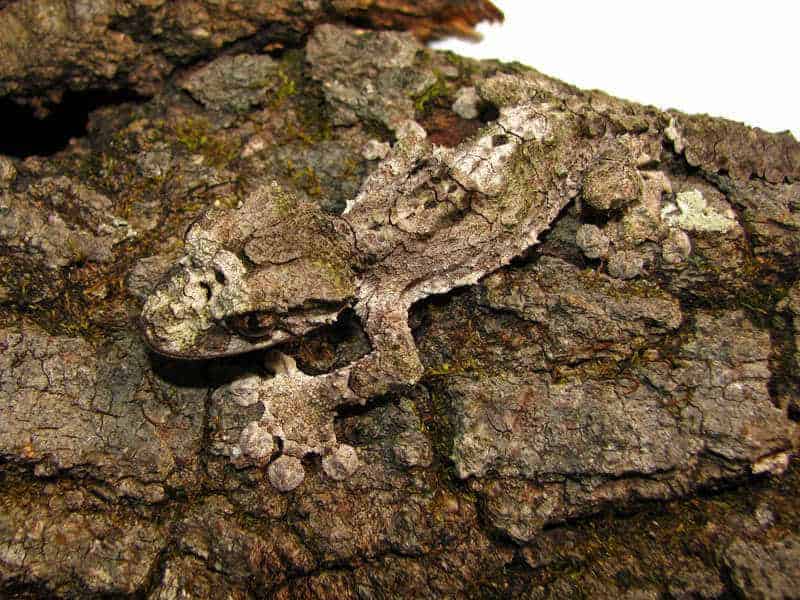
In the mysterious rainforests of Madagascar, a true master of disguise lurks in the shadows—the Mossy Leaf-Tailed Gecko (Uroplatus sikorae). With its incredible camouflage abilities, this remarkable creature has evolved to become virtually invisible against the backdrop of moss-covered trees and decaying foliage.
Its body, adorned with intricate patterns and textures, mimics the rough bark of tree trunks, while its flattened tail closely resembles a decaying leaf. By aligning its body with its surroundings and remaining completely motionless, this gecko becomes nearly indistinguishable from its arboreal habitat.
Gray Tree Frog
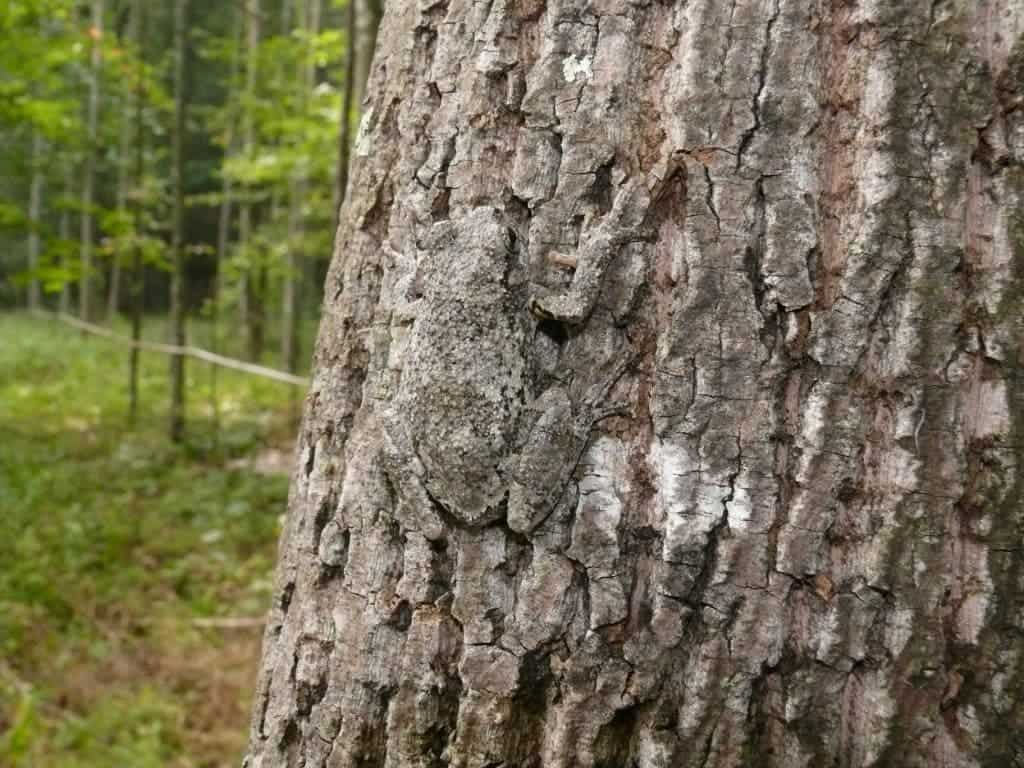
The Gray Tree Frog‘s ability to camouflage is truly extraordinary. Its mottled gray or greenish-gray skin is speckled with dark markings, perfectly resembling the rough bark of trees or the lichen-covered surfaces it calls home. This remarkable adaptation allows the frog to virtually disappear against the trunks and branches of trees.
Not only does the Gray Tree Frog (Hyla versicolor) expertly mimic the appearance of tree bark, but it also possesses the ability to change its skin color. This impressive adaptation allows it to match the hues and shades of its surroundings, whether it be a vibrant green leaf or a weathered tree trunk. By adjusting its pigments, the frog can fine-tune its camouflage and remain hidden from potential predators.
Gray Cicada
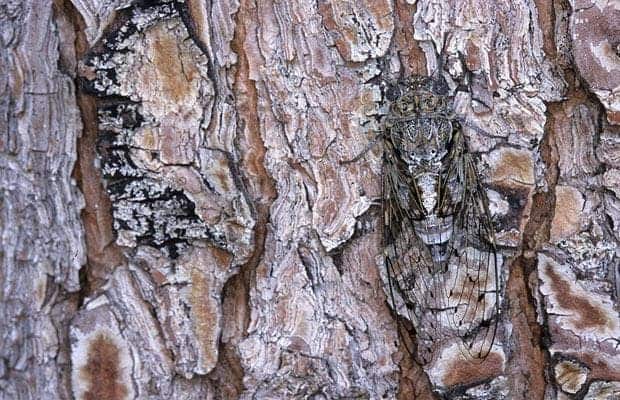
The Gray Cicada‘s camouflage is primarily focused on concealment within the leafy canopy of trees. Its wings and body are veiled in hues of gray, brown, and green, closely resembling the bark and foliage of the trees it inhabits. This intricate coloration helps the cicada remain inconspicuous, ensuring it can avoid the watchful eyes of predators such as birds and small mammals.
However, it’s not just their appearance that aids in camouflage—the Gray Cicada possesses another remarkable adaptation: its song. Male cicadas produce a loud, distinctive mating call that resonates through the forest. While this may seem counterintuitive to remaining hidden, the chorus of countless individuals creates a sensory overload, making it difficult for predators to pinpoint the source of the sound. This clever strategy allows the cicadas to continue their courtship while minimizing the risk of predation.
Casque Head Chameleon
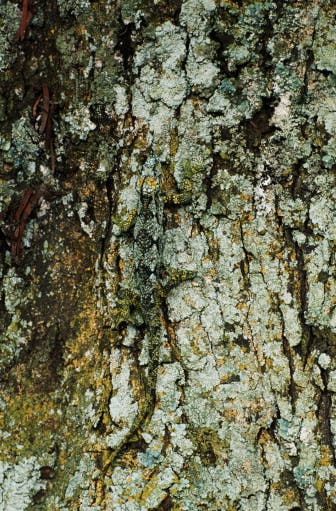
The Casque Head Chameleon‘s camouflage is a visual marvel. Its body exhibits a range of colors, including greens, browns, and yellows, expertly matching the foliage and vegetation of the rainforest of Madagascar. This remarkable adaptation allows the chameleon to remain concealed from both predators and prey, ensuring its survival in its complex arboreal habitat.
What sets the Casque Head Chameleon (Calumma nasutum) apart is its extraordinary head crest, or casque, which gives it its name. This prominent structure extends from the top of its head and resembles a helmet or crown, providing a unique silhouette. The casque not only adds to its distinctive appearance but also aids in its camouflage by breaking up its outline, making it more difficult for predators to spot.
Lichen Spider
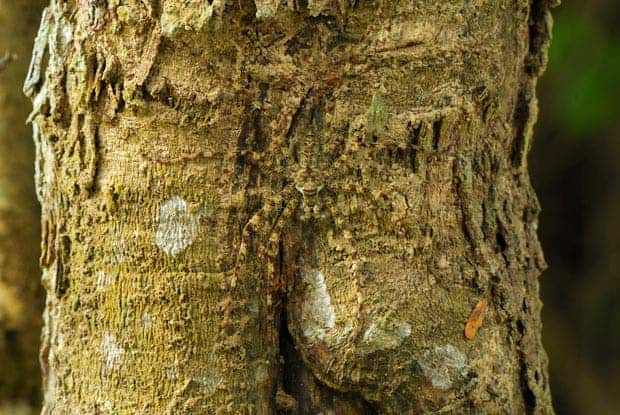
The Lichen Spider‘s (Diaea ergandros) body is adorned with intricate patterns and colors resembling the texture and hues of lichen, a common organism found on trees and rocks. The spider’s mottled green, gray, and brown coloration perfectly mimics the lichen-covered surfaces, rendering it nearly invisible to predators and prey alike.
The spider’s body shape also aids in its camouflage. Its flattened profile and irregularly shaped abdomen resemble a lichen-covered surface, further enhancing its disguise. By remaining motionless among the lichen-covered branches and rocks, the Lichen Spider becomes virtually indistinguishable from its environment, providing it with a significant advantage in hunting and avoiding predators.
Underwing Moth
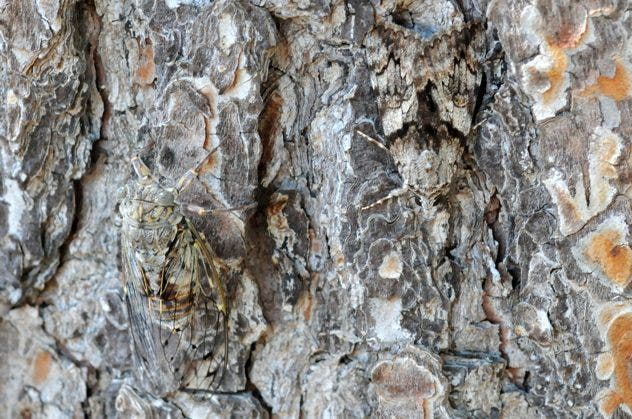
The Underwing Moth‘s camouflage is a tale of two disguises. At rest, its upper wings exhibit cryptic patterns in shades of brown, gray, and black. These subdued colors allow the moth to blend seamlessly with the bark of trees and other surfaces, rendering it nearly invisible to predators during daylight hours.
However, when disturbed or in flight, the Underwing Moth (genus Catocala) unfurls its vibrant, brilliantly colored hindwings—a hidden spectacle rarely seen by its observers. These hindwings are adorned with bold patterns and striking hues, such as rich oranges, fiery reds, and electric blues. The sudden display startles predators and serves as a deterrent, momentarily confusing or startling potential threats.
Peppered Moth
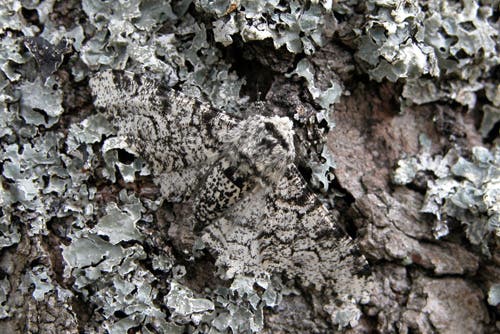
The Peppered Moth‘s (Biston betularia) camouflage comes in two distinct forms: light and dark morphs. Prior to the Industrial Revolution, the majority of these moths had a light coloration, speckled with tiny dark spots resembling lichen-covered tree bark. This pattern allowed them to blend seamlessly with their environment.
However, as industrial pollution blanketed trees and surfaces with soot and darkened the landscape, a genetic variation in the moth population became advantageous. A small percentage of moths exhibited a dark coloration, providing them with improved camouflage against the newly darkened tree trunks.
Owl Fly Larva
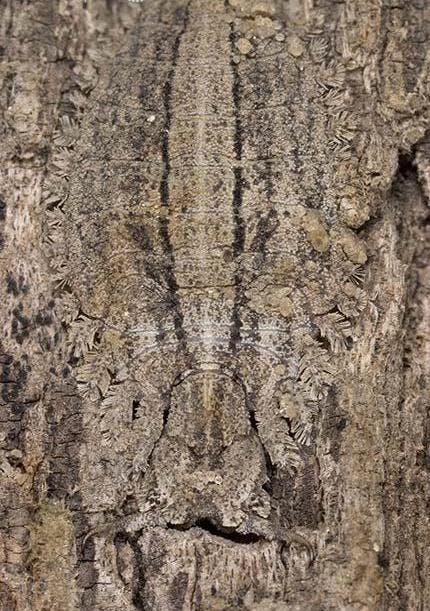
The Owl Fly Larva‘s camouflage is an ingenious mimicry of its environment. Resembling small patches of lichen or moss, the larva’s body is covered in tiny projections and irregular shapes that closely resemble the texture and coloration of its habitat. This remarkable adaptation makes it nearly invisible to potential prey and predators alike, providing it with a significant advantage.
The larva’s camouflage serves a dual purpose. First and foremost, it allows the Owl Fly Larva to remain concealed from predators, such as birds and spiders, which might otherwise make it a quick meal. Additionally, its disguised appearance helps it to ambush unsuspecting prey, such as small insects, by blending seamlessly into the environment and striking with lightning speed.
Eastern Screech Owl
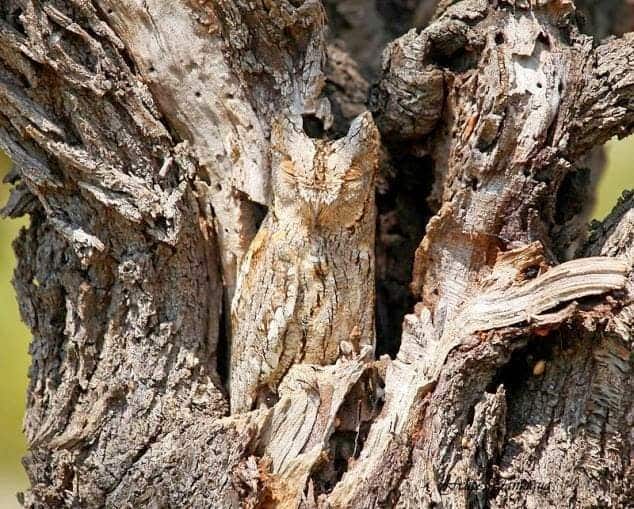
The Eastern Screech Owl‘s camouflage is perfectly suited for its arboreal habitat. With plumage that ranges from gray to reddish-brown, these owls blend harmoniously with the tree bark they roost upon. Their mottled patterns and intricate feather details break up their outline, providing excellent concealment during daylight hours, while their compact size enables them to nestle comfortably in tree cavities.
Beyond their remarkable coloration, the Eastern Screech Owl’s adaptations extend to its behavior. These owls have a remarkable ability to remain motionless and blend seamlessly with their surroundings, resembling a tree branch or knot. Their piercing yellow eyes, framed by their feathered facial discs, help to break up their silhouette, making them even more inconspicuous to potential threats.
From insects to reptiles, and even birds, these creatures have evolved ingenious strategies to blend seamlessly with the textured surfaces of trees and bark-covered habitats. The phenomenon of bark camouflage not only serves as a captivating showcase of nature’s diversity but also provides a lens through which we can better understand the intricate relationship between organisms and their environment.
Was this helpful?



